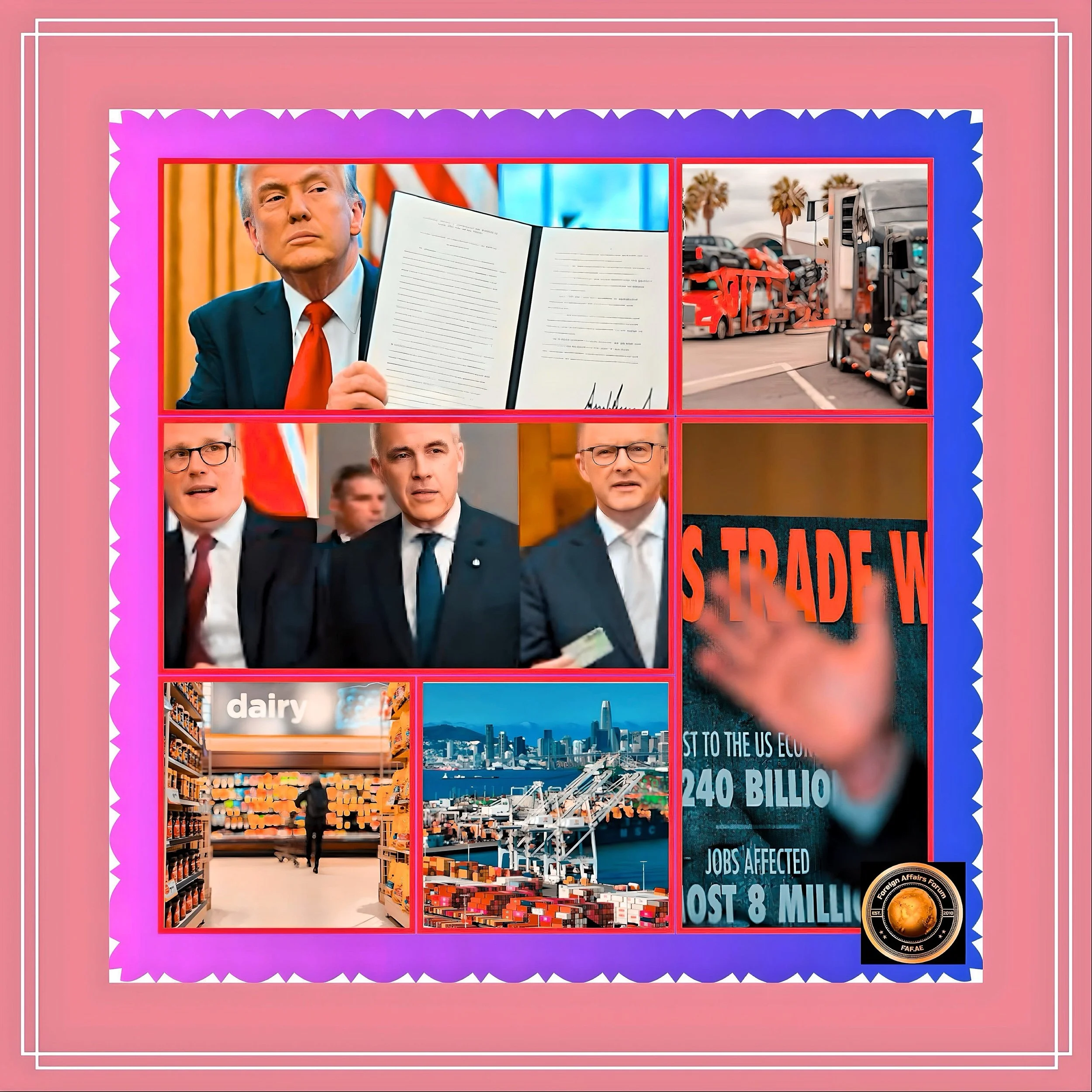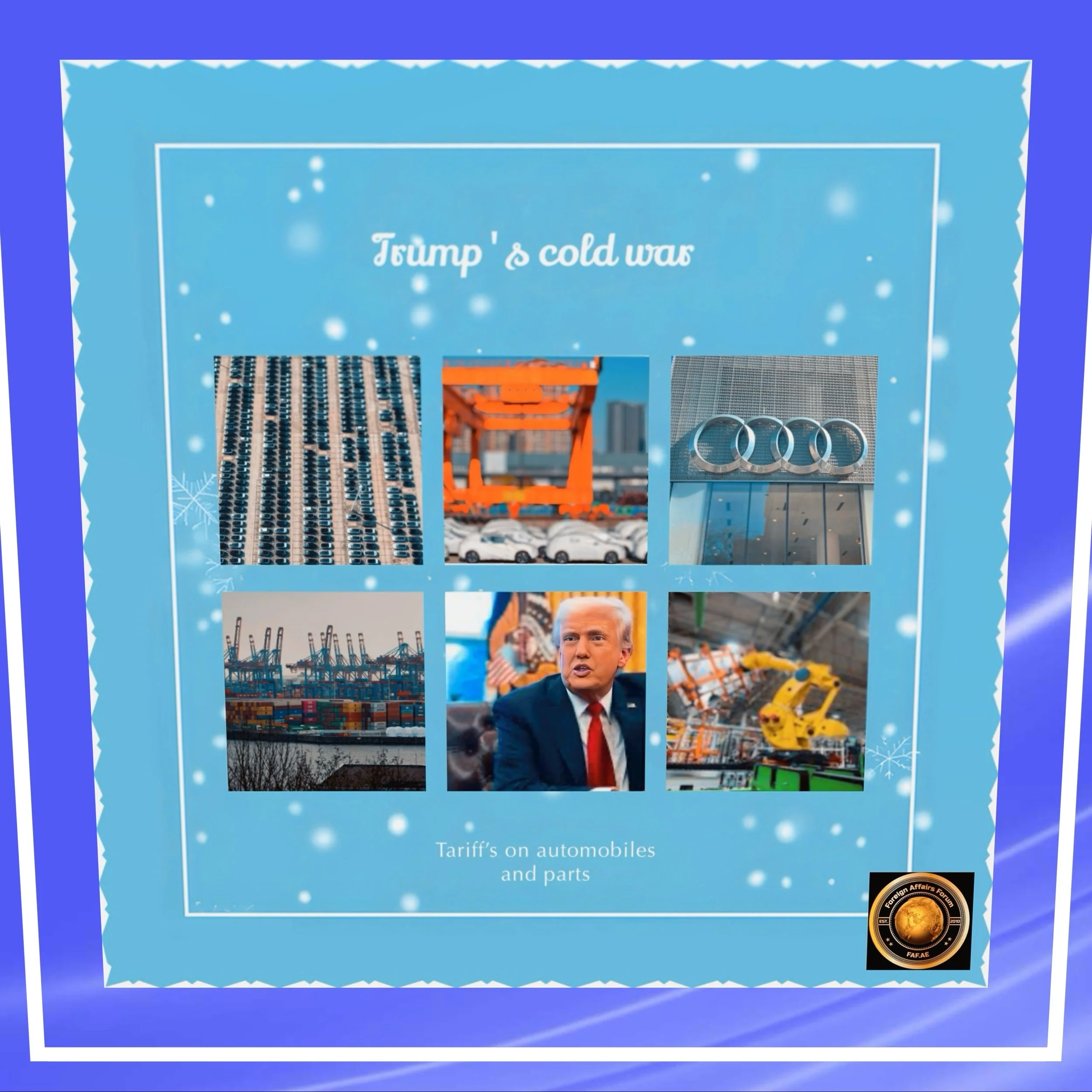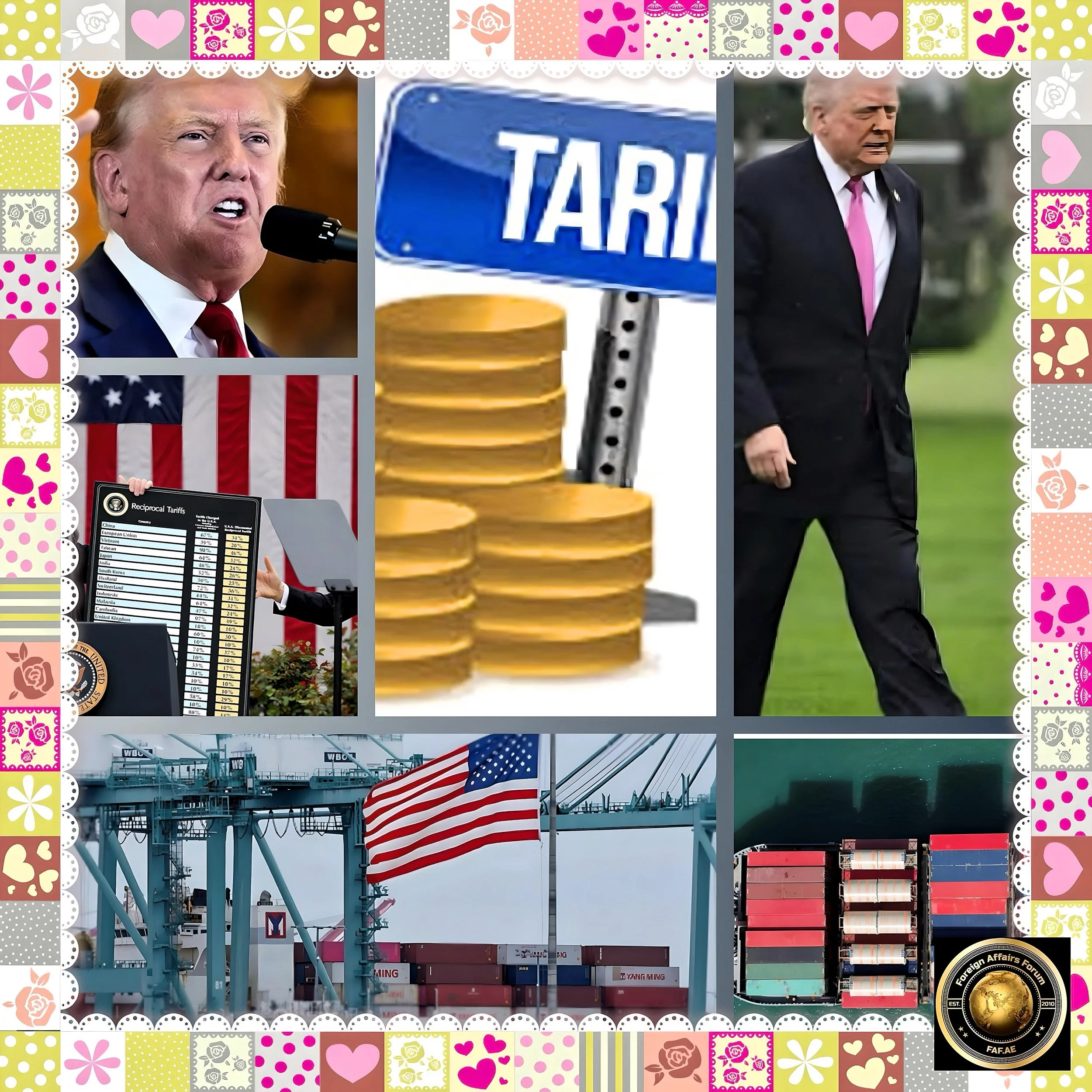The Global Economic Implications of Trump’s “Liberation Day” Tariffs and International Responses
Introduction
President Donald Trump’s announcement of sweeping reciprocal tariffs, “Liberation Day,” marks a seismic shift in global trade policy.
The measures impose a baseline 10% tariff on all imports to the United States, with elevated rates targeting specific nations—34% for China, 20% for the European Union (EU), 26% for India, and higher still for smaller economies like Vietnam (45%) and Lesotho (50%).
Framed as a corrective to decades of perceived trade imbalances, the tariffs have drawn swift condemnation from global leaders and economists, who warn of retaliatory measures, inflationary pressures, and a potential global recession.
FAF analyzes the tariffs' structural design, economic rationale, sector-specific consequences, and the geopolitical fallout reshaping international trade dynamics.
Structural Design and Rationale of the Tariff Regime
Foundations of the Reciprocal Tariff Framework
The “Liberation Day” tariffs differ from the multilateral trade principles that have governed global commerce since World War II.
The policy replaces the Most-Favored-Nation (MFN) system under the World Trade Organization (WTO), which binds countries to uniform tariff rates for all trading partners, with a bilateral approach that aligns U.S. import duties with those imposed by other nations.
For instance, India’s average MFN tariff of 17%—contrasted with the U.S.’s 3.3%—justifies the 26% levy on Indian goods under the reciprocity principle. Similarly, China’s 34% tariff reflects its $295 billion trade surplus with the U.S. in 2024, compounded by existing fentanyl-related duties.
The Trump administration argues that asymmetric tariffs and non-tariff barriers—such as currency manipulation and lax environmental standards—have disadvantaged U.S. industries.
Treasury Secretary Scott Bessent emphasized that reciprocal tariffs aim to “level the playing field” by penalizing nations whose trade policies allegedly restrict U.S. exports.
However, critics contend that the policy risks isolating the U.S. economically, as 60 countries collectively accounting for 78% of U.S. imports now face heightened trade barriers.
Exemptions and Strategic Omissions
Notably, the tariffs exclude Canada and Mexico due to existing exemptions under the U.S.-Mexico-Canada Agreement (USMCA), though a separate 25% duty on automobiles from these nations will take effect on April 9.
The UK, Brazil, and Singapore—which recorded trade deficits with the U.S. in 2024—were spared elevated rates, receiving only the 10% baseline tariff.
Russia’s absence from the tariff list, despite a $2.5 billion trade surplus, underscores geopolitical considerations beyond strict reciprocity.
Global Reactions and Retaliatory Measures
European Union: Coordinated Countermeasures
The EU has vowed a “strong plan” to retaliate against the 20% tariff, including suspending intellectual property rights for U.S. tech firms and targeting levies on agricultural imports like beef and poultry.
European Commission President Ursula von der Leyen criticized the tariffs as “illegal” under WTO rules. At the same time, Italian Prime Minister Giorgia Meloni—a Trump ally—called the move “wrong” and counterproductive to transatlantic unity.
Germany, the EU’s largest exporter to the U.S., faces acute strain: Mercedes-Benz may withdraw budget models from the U.S. market due to a 25% auto tariff, threatening 50,000 jobs in its automotive sector.
China: Escalating Trade War Risks
China’s Commerce Ministry condemned the 34% tariff as “unilateral and protectionist,” pledging “resolute countermeasures” to safeguard its interests. Analysts anticipate retaliatory tariffs on U.S. agricultural exports, mirroring the 2018–2019 trade war that saw soybean prices plummet 20%.
With combined U.S. tariffs on Chinese goods now at 54%—including February’s fentanyl-related duties—the Biden-era détente has collapsed, raising fears of supply chain disruptions in electronics and pharmaceuticals.
India: Strategic Ambivalence
India’s response has been mixed. While Commerce Minister Piyush Goyal termed the 26% tariff a “mixed bag” rather than a setback, Prime Minister Narendra Modi faces domestic pressure to retaliate against sectors like U.S. machinery and pharmaceuticals.
Bilateral tensions are exacerbated by stark tariff disparities: the U.S. imposes 2.5% on passenger vehicles versus India’s 70% and 0% on network switches versus India’s 10%. With the U.S.-India trade deficit reaching $45.7 billion in 2024, negotiations to exempt sectors like IT services remain critical.
Asia-Pacific and Smaller Economies
Australia’s Prime Minister Anthony Albanese ruled out reciprocal tariffs, arguing that Americans would bear the “biggest price” through inflated consumer costs.
Vietnam and Thailand, pivotal links in post-China supply chains, face existential threats from 45% and 36% tariffs, which could derail their manufacturing-led growth models.
Japan’s Prime Minister Fumio Kishida warned of “grave consequences” for bilateral relations, with tariffs on auto parts likely to disrupt Toyota and Honda's production.
Economic Consequences and Market Volatility
Immediate Market Reactions
Global markets reacted violently to the announcement. The S&P 500 futures tumbled 3.3%, while the tech-heavy Nasdaq plunged 4% amid fears of disrupted semiconductor imports from Taiwan (32% tariff).
Safe-haven assets surged, with gold hitting record highs and the yen appreciating to ¥148.15/$. In Europe, the STOXX 600 slid 2.1%, led by automakers BMW (-6.4%) and Volkswagen (-5.9%). Emerging markets faced capital flight, with India’s Sensex shedding 1,200 points and the Vietnamese dong depreciating 1.8%.
Inflation and Growth Projections
J.P. Morgan Research revised its 2025 U.S. GDP growth forecast downward to 1.6%, citing trade policy uncertainty and anticipated consumer price hikes.
The IMF estimates that a universal 10% U.S. tariff could reduce global GDP by 0.5% through 2026, with stagflation risks intensifying as supply chains recalibrate. In the EU, economists project a 0.8% contraction in exports to the U.S., potentially eroding the bloc’s fragile post-recession recovery.
Sector-Specific Disruptions
Automotive: The 25% tariff on EU vehicles could raise the average price of a German sedan in the U.S. by $12,000, jeopardizing 18% of EU auto exports.
Technology: Apple shares fell 7% as China’s 34% tariff threatens iPhone assembly costs, while TSMC (Taiwan) faces margin compression from U.S. levies.
Agriculture: U.S. farmers brace for Chinese retaliatory tariffs on soybeans and pork, echoing 2018 losses of $12 billion in export revenues.
Legal and Institutional Challenges
WTO Compliance and Dispute Mechanisms
The EU has initiated proceedings at the WTO, arguing that reciprocal tariffs violate Article I (MFN principle) and Article II (bound tariff commitments).
However, the U.S. contends that WTO rules permit “necessary” trade measures to protect national interests under Article XXI—a provision traditionally invoked for security purposes. Legal scholars warn that a U.S. victory could unravel the WTO’s enforcement framework, encouraging copycat protectionism.
Domestic Legal Hurdles
U.S. industry groups, including the Chamber of Commerce, have filed suits alleging executive overreach under the Trade Act of 1974, granting presidents broad but unlimited authority to adjust tariffs.
The litigation’s outcome could hinge on whether courts deem the tariffs “proportionate” to the stated goal of addressing trade imbalances.
Geopolitical Repercussions and Strategic Realignments
Shifting Alliances and Trade Blocs
The tariffs have accelerated efforts to diversify trade partnerships. The EU is fast-tracking negotiations with Mercosur nations, while India seeks to expand exports to Africa and the Middle East. China, meanwhile, is deepening ties with ASEAN through the Regional Comprehensive Economic Partnership (RCEP), offering tariff concessions to offset U.S. market losses.
U.S.-Europe Relations: A Fractured Front
Trump’s tariffs have strained the NATO alliance, with French President Emmanuel Macron accusing the U.S. of “economic betrayal.” Eastern European nations, reliant on U.S. military support, face a dilemma: acquiesce to tariffs or risk alienating a critical security partner.
Conclusion
Pathways to De-escalation
The “Liberation Day” tariffs risk entrenching a bifurcated global economy with competing trade blocs and diminished multilateral cooperation.
While the U.S. seeks to rectify perceived inequities, the collateral damage—higher consumer prices, retaliatory measures, and eroded diplomatic capital—may outweigh short-term gains.
De-escalation hinges on bilateral negotiations to exempt strategic sectors and establish dispute-resolution mechanisms, particularly with the EU and India.
However, with global growth already faltering, the window for compromise is narrowing.
Policymakers must weigh nationalist rhetoric against the interconnected realities of 21st-century commerce—or risk a repeat of the 1930s’ destructive trade wars.






